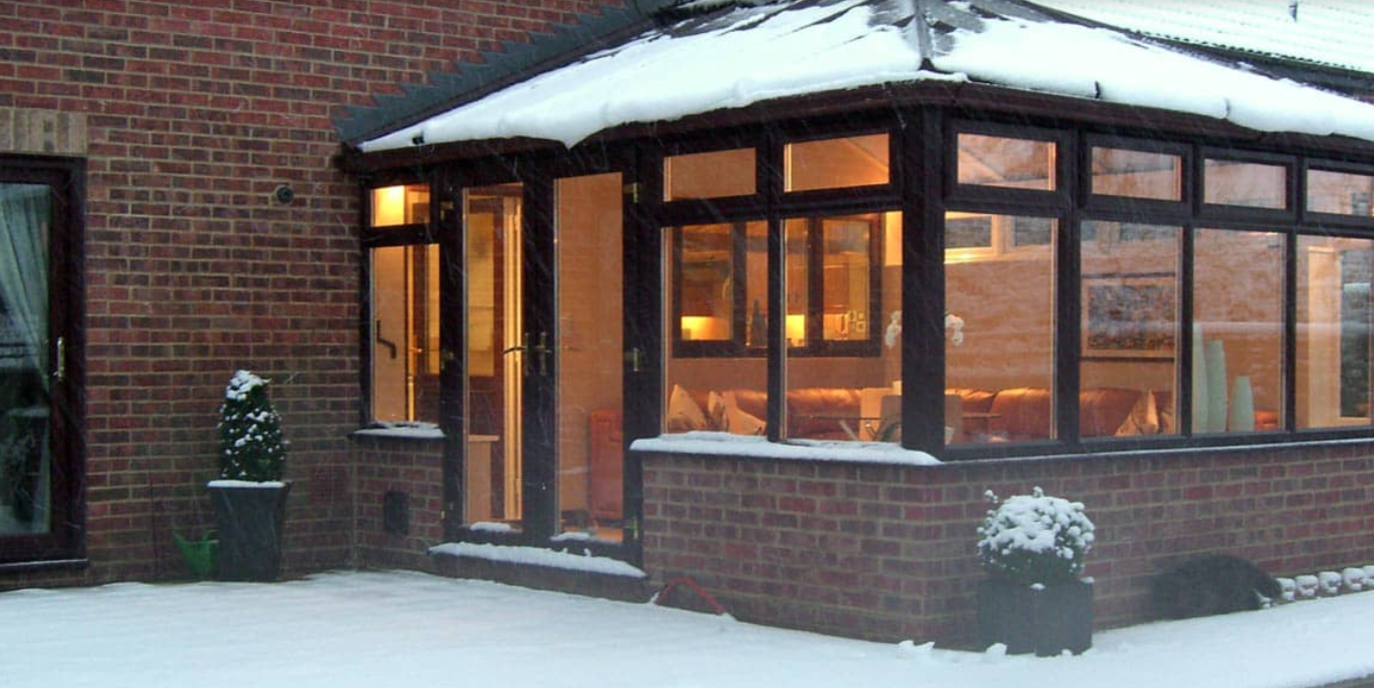PROBLEM: I CAN NOT USE MY CONSERVATORY IN THE WINTER
Posted on 22nd June 2020 at 20:45
One of the biggest concerns that people have when considering a conservatory build is how much use it’ll get in the winter months. Let’s face it, conservatories are primarily for enjoying the summer, so it might seem a little like a large investment for something that you only use for a few months each year.
In this article, we’re going to talk about the common issues people have when using their conservatory in the winter and why it’s not such a big deal like many people make it out to be.
PROBLEM 1: IT’S TOO COLD
One of the most common reasons why people can’t use their conservatory in the winter is due to the cold. Since the majority of the conservatory will be made up of glass, it’s going to be much colder than the rest of the house and this can create several problems. For starters, you’re going to use much more electricity and gas heating up the home because your conservatory is too cold, and it means that if you sit in the conservatory or use it, you’re going to be surrounded by cold windows that are slowly emitting cold air.
There are a few ways to solve this issue. For starters, we can add insulated curtains which will reduce the transfer of heat from your conservatory to the window and then outside. You’ll need fairly thick curtains and it can often look unsightly, especially if you have to do this in the morning. However, if there’s enough sunlight, then you can open the curtains in the morning and let the sunlight in.
You can also replace some of the glass with a solid insulating material. For example, a solid roof can be used if your conservatory doesn’t get much sunlight due to the position of your home, or you can add insulation around the edges of your conservatory. This will help reduce the transfer of heat and make your conservatory a lot warmer in the cold months.
Lastly, although it’s expensive, you can opt to use underfloor heating in your conservatory. This can be installed with relative ease and it will keep your conservatory nice and warm through the winter months so that you can actually use it. Although the price is much higher than other options, it’s a long-term investment that will pay off by also reducing your heating bills due to a more efficient heating element.`
PROBLEM 2: THERE’S TOO MUCH CONDENSATION
Due to the differences in temperature between the outside and inside of your home, you’ll often find that a lot of condensation builds up on your windows. This is because the cold air outside will chill the windows so that any water vapour in the air around your home will reach the windows and turn back into liquid. This is why you get water droplets forming on your windows during the winter, especially if you heat your home to a relatively high temperature to combat the cold.
A simple way to deal with this would be to purchase a dehumidifier to remove any water vapour in the air of your conservatory. However, this can be rather expensive and will increase your electricity bills since you’ll need to run it for several hours a day. You could also attempt to keep the temperature around your home as equal as possible instead of focusing your heating on the conservatory to keep it warm. This will require some insulation around your conservatory and also a heating element to ensure that your home is evenly heated.
With these changes, you should start to see reduced condensation on your windows. It’s almost impossible to completely get rid of it without sufficient ventilation, but during the winter, it’s usually not a good idea to leave the windows open.
PROBLEM 3: NOISY WINDOWS
Lastly, there’s nothing worse than rattling windows or the sound of wind getting on your nerves during the winter. Conservatories can be rather loud especially if you don’t have some form of sound insulation, but in general, all solutions that work for keeping in the heat can also apply to keeping out the sound.
This means that any kind of insulation will generally double as sound-proofing and also noise-proofing. You could also use double-glazed windows to help keep out most of the sounds that you’ll experience from windy winter nights. If there’s any rattling, then it’s worth inspecting the exterior of your conservatory to see if any panels are loose or if any other structural issues are visible.
Share this post:



